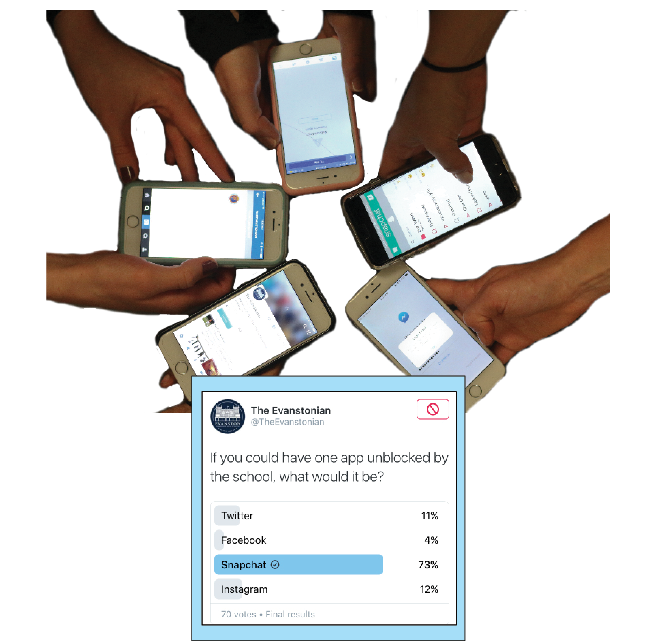School must embrace social media
“Snap failed to send.”
While the recent re-blocking of Snapchat frustrates many students, this trend of social media censorship academically disadvantages all.
Senior Studies students frequently use Instagram as a way to expand their project. Many of these Instagram followers are ETHS students, and if a project’s audience can’t be reached during the prime Instagram hours of the day, a strain is put on the expansion of this project.
Students aren’t the only ones affected by the social media block; teachers feel the hit too. Trigonometry teacher Sachin Jhunjhunwala uses Twitter as a way to connect with his students, tweeting daily announcements about homework answers, test dates and much more.
Bringing social media into the classroom can increase student collaboration. GroupMe, a group messaging app, helps students working on a group project communicate in an organized way, but the school still has this app blocked.
Social media also encourages student participation. Engaging activities using social media can be used to attract students to a project. Denying students of these online freedoms puts a cap on their education and limits how much a student’s education can expand.
It is understandable why the faculty at ETHS wouldn’t want social media to be allowed at the school. Students are constantly attached to their phones and reducing social media allowance is a quick fix to increase student participation and focus.
Though technology poses a constant distraction during class, in a free period with no work to do, students should be able to have access to whatever apps they want. The same is true with passing periods.
Blocking social media in school limits students’ education and freedom. Rather than rejecting social media’s positive impact on education, the school should embrace it. Now is the time for the school administration to allow these social media platforms, not just for our entertainment but for learning purposes as well.
Your donation will support the student journalists of the Evanstonian. We are planning a big trip to the Journalism Educators Association conference in Philadelphia in November 2023, and any support will go towards making that trip a reality. Contributions will appear as a charge from SNOSite. Donations are NOT tax-deductible.













